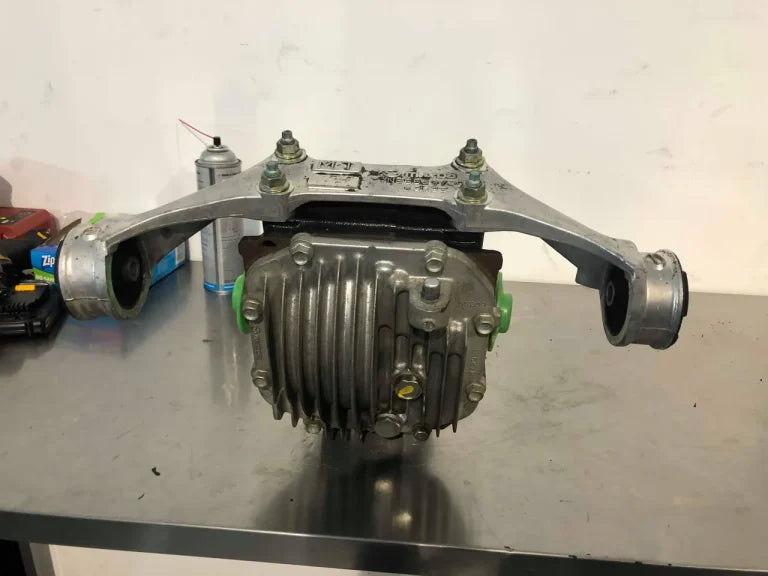Here is a look inside a stock NC differential that has failed

Here is an NC differential ready to be torn down.

Diff cover ready to be taken off. If you’re doing this, make sure it is drained. Also note that the vent is removed to get the bolt behind it out.

With the diff cover removed, you see the carrier and ring gear. Removing the four cap bolts allows you to remove the carrier assembly. Some persuasion will be needed to get the assembly and bearings out. One hit is to go through the side hole with a narrow brass punch to knock one shim out to relieve preload for easier removal.

Make sure you keep track of the caps, shims, and bearings. They go back in the same side they came out of. If you’re replacing the bearings, make sure you check your backlash and reshim if necessary. These diffs typically come with too little backlash even for street use. We have even seen these come from the factory with zero backlash!

Removing the ring gear allows you to get to the hidden screws keeping the LSD unit sealed up.

The guts of the NC LSD. Not much to it. Note the fiction discs on top and bottom.


Here is a common issue with the friction disks. These tabs are very weak and break during launches, jumping curbs while on track, and anything else that can cause a shock load in the diff.

Here is the surface the friction disc rides on. It doesn’t take much time to wear these out. There were rumors that these units have 50ish ft lbs of break away, but we have never seen higher than 25 on brand new units. We are developing new friction discs to handle the stresses of spirited driving.

The “companion flange” as Mazda calls it. It is similar to a harmonic balancer on the engine. It’s not the best of companions when the thing separates from the flange and causes damage to the diff and transmission. Removal of them is highly recommended for any driving more aggressive than street driving.

Here is the pinion. Typically it taps right out with a dead blow. A press might be needed if it’s being stubborn.

The burn marks in this pinion bearing are a common occurrence. The OE bearings in this unit are only rated for 6700 RPM MAX when conditions are below 250 degrees. Worse conditions than that are very common for an NC track car without a diff cooler. We use upgraded bearings that up the rating to 8900 RPM. You can see that there was some debris making its way into the bearings by all the little nicks. It is hard to see here, but there is an excessive radius on the edge of the rollers. That indicates a worn out bearing.


You can see the front pinion bearing has signs of significant wear. Just like the rear pinion bearing. These are rated for less RPMs than what these can see during track use.

